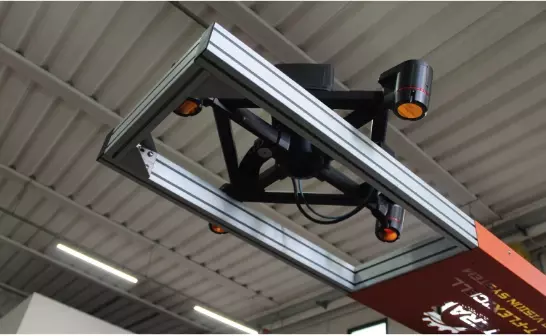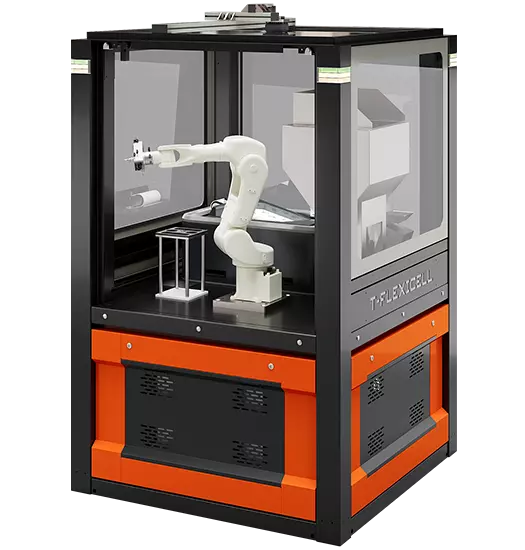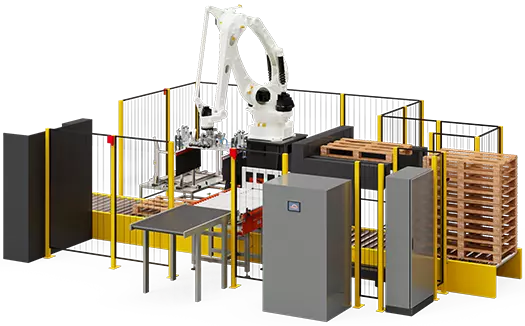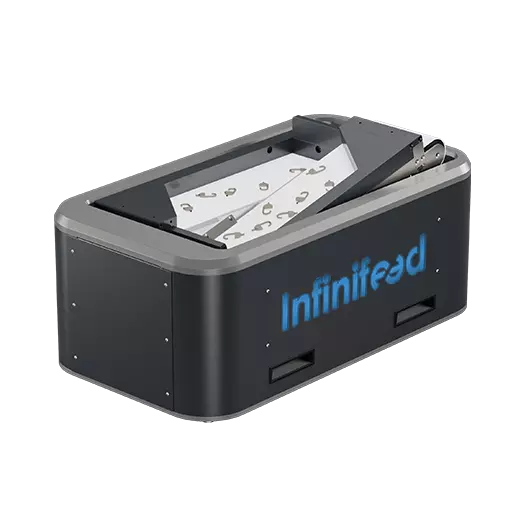ROBOTIC CELLS TO INNOVATE, SAVE, AND INCREASE THE EFFICIENCY OF YOUR PRODUCTION LINE
Our robotic cells and integrations are the result of years of experience in building automated lines that tangibly improve the production flow. Integrating a robot means maximizing multi-shift production, making it more reliable and repeatable, enhancing worker safety, and investing in technology with a payback period of less than one year.
SOLUTIONS FOR INDUSTRIAL AUTOMATION
T-FLEXICELL
Robotic cell for CNC machine tending
T-Flexicell™ is a robot cell whose purpose is to manage the loading/unloading of components of different sizes. The robotic cell can handle several vises both as part of a single process (the same operation is repeated on several vises), or in a multiprocessing (different operations across several vises).
The most distinctive feature of the range of robotic cells for Computer Numerical Control machine tending called T-Flexicell™ is definitely its flexible application: as a matter of fact, the cell is able to process components with different shapes and sizes thanks to an infeed system which allows loading items randomly.
The purpose of our cells is to maximize CNC machine efficiency and optimize production flow, thus obtaining better performances.
T-Flexicell™ also takes its name from its flexible shape: its compact size is without any doubt a big advantage and, depending on the application type, it can change design according to the specific needs of the sector and the client.
T-FLEXIPACK
Robotic cell for palletizing items
T-Flexipack™ is a robotic cell whose purpose is to carry out palletizing and depalletizing operations with items of different shapes and sizes.
The robotic cell can pick up and place objects to handle from and on:
- a conveyor belt
- a box/case
- a pallet.
That's why the most distinctive feature of the T-Flexipack™ robotic cells for palletizing is definitely their flexible application. This machine also takes its name from its flexible shape: its compact size is without any doubt a big advantage and, depending on the application type, it can change design according to the specific needs of the sector and the client.
INFINIFEED
Feeding system with integrated App
Infinifeed is the parallel counter-motion belt feeder that makes component conveying simple, fast, and efficient.
With its integrated App, you can configure the system, connect it with robots and vision systems, and manage and control all its functions.
THE EFFICIENCY OF THE FUTURE
IN YOUR HANDS
Competitiveness means developing industrial automation machines and robot integrations that can increase our customers' competitiveness in their respective market, achieving concrete and measurable results thanks to automation.

Quality and efficiency
Whether it is a robotic cell, an anthropomorphic robot, a SCARA, Delta or Cobot, all our integration machines are designed to significantly improve production flow and maximize your company's efficiency, as well as that of its machines. The future is quick, it requires precision and demands quality: choosing a robot satisfies all these needs with clear and short deadlines.

Precision and replicability
We at Tera think that automating means optimizing a company's performances; it means rethinking a company to maximize productivity, optimizing time and eliminating waste, in order to obtain high-quality, precise, always consistent and perfectly controllable results which might be unattainable (or too expensive) for humans.

Faster, safer and more precise
It is our job, thanks to our experience as system integrator, to help our clients choose the automation that best suits their needs, so as to make any processing or production flows quicker, safer and more precise. Because of the advantages brought on by all these factors, a robotic integration by Tera Automation has an investment payback period of less than a year.
SOLUTIONS FOR INDUSTRIAL AUTOMATION
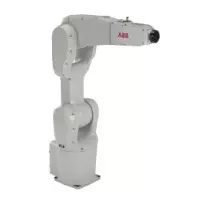
Anthropomorphic robots
- Long-range pick & place
- Handling objects from light to heavy
- Handling even complex objects
- 6 axes (high flexibility)
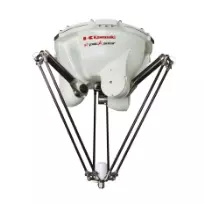
Delta robots
- Short-range pick & place
- Handling of lightweight objects
- High productivity
- Maximum speed
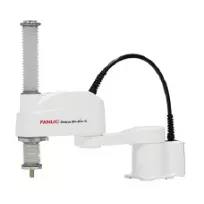
Scara robots
- Short-range pick & place
- Handling of medium-sized, lightweight objects
- 4 axes (speed)
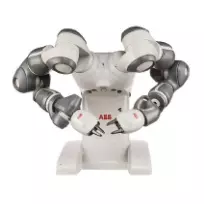
Cobots
- Easy programming
- Quick installation
- Collaborative: works with human contact
- Safe: no need for barriers
ROBOTS CAN SEE!
VISION SYSTEMS:
2D and 3D vision systems are advanced technologies increasingly integrated into service robots, that significantly improve efficiency and precision in production processes. These systems use cameras and sensors to capture images and three-dimensional data of objects, allowing robots to identify, locate, and manipulate them autonomously. 2D vision relies on two-dimensional images to detect features such as shape, color, and orientation, while 3D vision provides a more complete understanding of geometry and spatial positioning. The integration of these systems into service robots makes them ideal for complex industrial applications such as assembly, quality control, and bin picking.
